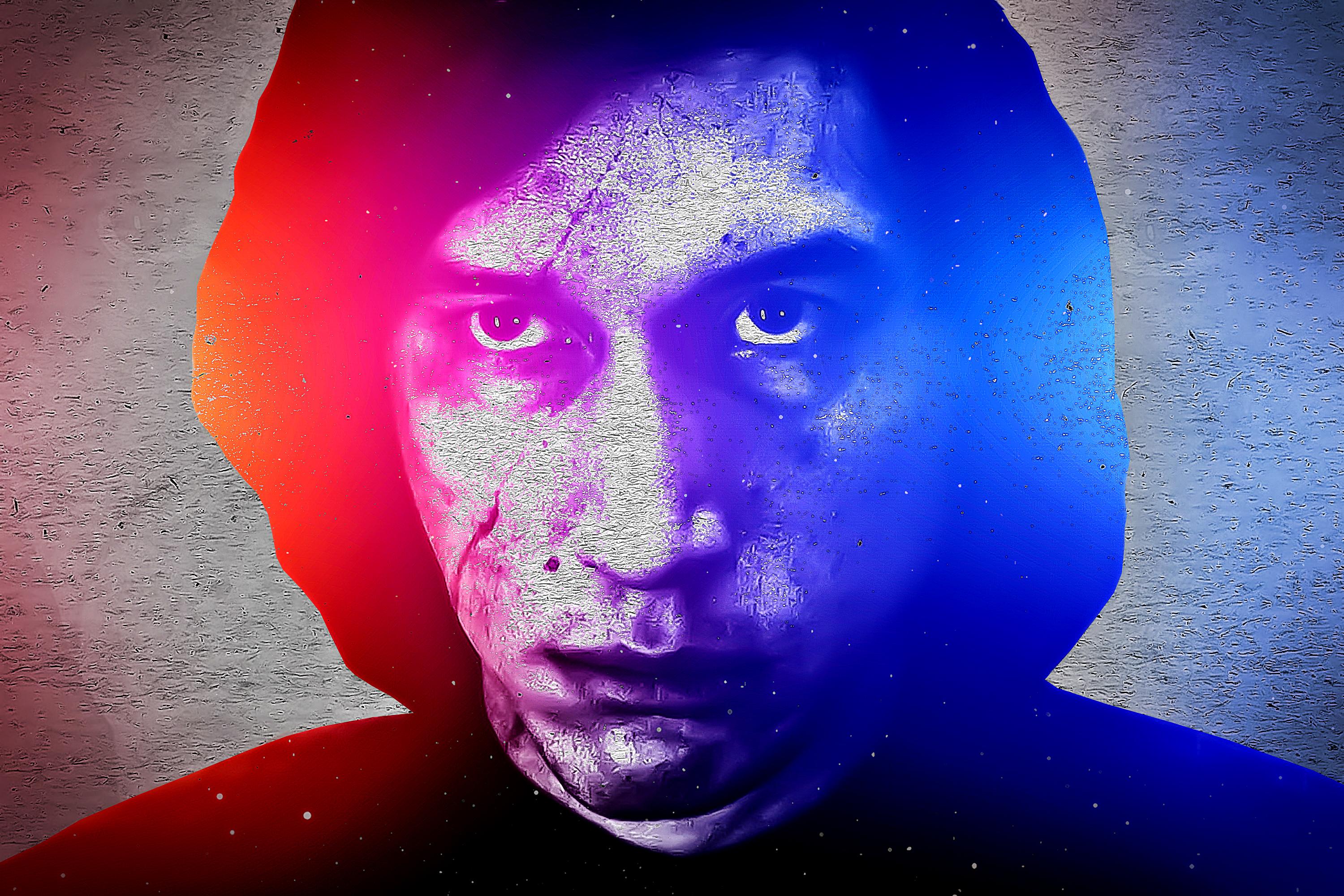
One of the more justified criticisms lobbed at The Last Jedi was questioning the timesuck of a side quest Finn and Rose had on the casino-loving, Monte Carlo–esque planet of Canto Bight. Some fans and critics seemed to agree that the detour became an unnecessarily long aside in a film where a lot (too much?) was happening all at once. Finn and Rose’s mission to find a codebreaker who could temporarily shut down the First Order’s ability to track Resistance ships in hyperspace yielded Benicio del Toro’s beguiling “DJ,” whose codebreaking skills amounted to nothing of consequence because he double-crossed them.
Now, DJ is hardly what you’d call a memorable Star Wars character—if anyone has a large stash of DJ memorabilia in their home, can I ask … why? But DJ does offer Finn and Rose a compelling insight into how the galaxy actually operates. Rose assumes that all the residents of Canto Bight got rich selling weapons and ships to the First Order, which is the main reason she looks at the planet with contempt. However, as DJ later shows Finn, the owner of a ship they’ve stolen to escape the planet was an arms dealer who sold to the First Order—but who sold to the Resistance, as well. “It’s all a machine, partner,” DJ tells Finn, like he’s taking a hit from an intergalactic bong.
It’s a little moment, but it embodies one of the biggest takeaways from Rian Johnson’s film: On the whole, Star Wars might be a classic tale of good versus evil, but it’s naive to think that all the inhabitants of an entire, diverse galaxy fit squarely into that binary. (Plus, everyone isn’t going to have the same interpretation of good and evil.) The greedy, unregulated capitalism on display on Canto Bight isn’t great, for sure, but it’s not exactly Order 66. The Last Jedi might be somewhat divisive in part because it’s willing to lean into gray areas and moral ambiguity more than any other film in the franchise.
Take the return of Luke Skywalker, who’d been elevated to mythical status during his self-exile on Ahch-To. Rather than welcome Rey with open arms and teach her the ways of the Jedi, he’s dismissive and scornful toward the Jedi ethos. Luke wasn’t presented as a living legend as much as a man with flaws, regrets, and insecurities. (He is also extremely washed and milks giant aliens for sustenance; this is not your father’s Skywalker.) It’s a more interesting—and difficult-to-square, even to Mark Hamill—character evolution. Even the fateful night when Kylo Ren destroyed Luke’s new Jedi temple has multiple retellings courtesy of both characters, suggesting that the real truth—whether Luke was seriously trying to kill his pupil, or having a brief and regrettable moment of weakness—lies somewhere in the middle.
In fact, to give this new trilogy a little more credit, its new heroes and villains are clever tweaks of some established Star Wars tropes. Finn showed the potential humanity hiding underneath a Stormtrooper helmet. Poe Dameron demonstrated the limits—and still, yes, inherent sex appeal—of Han Solo–esque bravado in the cockpit. The misogynistic backlash to Rey’s impressive Force abilities ironically helped display the importance of shifting the franchise’s power dynamics. And then there was Kylo Ren, an angsty, perpetually insecure man-child whose petulance made him one of the most fascinating franchise villains of this century.
In The Last Jedi, Kylo also provided what could be the new trilogy’s mission statement: “Let the past die; kill it, if you have to.” The past Kylo’s referring to isn’t confined to Rey being hung up on her mysterious parentage, but also applies to the basic delineations of Jedi and Sith: a moral and philosophical divide on opposite ends of the Force that feels as old as time itself.
Flawed as he is, Kylo doesn’t want to be a Sith lord like his idol/grandpapa Darth Vader as much as he wants to establish something new in its place—and at one point, he wants Rey beside him to do it. The relationship between Kylo and Rey—though I don’t necessarily mean relationship, apologies to the Reylo shippers out there—is fascinating because it shows the potential nuance that could come from transcending those Jedi-Sith archetypes, which might be a requirement once we get Star Wars movies that go beyond the Skywalker saga.
After all, while we can unanimously agree the Rebel Alliance was good and that the Sith and the Galactic Empire were evil—is there a more entertainingly cartoonish bad guy in pop culture than Emperor Palpatine?—Luke’s criticisms of the well-meaning Jedi are well supported. The Jedi of the prequel trilogy, through their buffoonish inability to sniff out Palpatine, were complicit in the Empire’s rise to power. The Jedi Masters were so hilariously out of touch, it’s only fitting they were perched in an ivory tower while democracy crumbled beneath them and Order 66 was executed. Hubris was their undoing as much as Darth Vader. (Not to mention antiquated rules like Jedi celibacy that inadvertently led to Anakin Skywalker’s heel turn in the first place.)
But the stuff with the Jedi wasn’t the franchise experimenting with moral gray areas; the Jedi weren’t bad, just tragicomically incompetent. Since the original trilogy, Star Wars has been pretty clear about who’s good and who’s evil; Anakin’s redemption notwithstanding, the closest thing to ambiguity in the franchise is the ever-evolving debate over whether Han shot first and whether Greedo said “Maclunkey.” And that, of course, is more than fine: These movies are timeless classics and, Han-Greedo nonsense aside, most fans wouldn’t want to change a thing. This is about where Star Wars is headed, as Disney will be working on more films and TV series on Disney+ for the foreseeable future.
It would be interesting if Star Wars became more invested in exploring gray areas, something that has defined Rey, Luke, and Kylo Ren’s arcs through The Force Awakens and The Last Jedi—and something we’ve even seen on The Mandalorian with its eponymous bounty hunter. Rian Johnson is in talks with Lucasfilm to develop a new Star Wars trilogy of his own, and seeing that his film is the main reason we’re having this discussion, that bodes well for more moral ambiguity in the franchise’s future.
Before all that can happen, though, there’s still The Rise of Skywalker and how the Skywalker saga ends in the hands of J.J. Abrams. Palpatine is making his grand return to the franchise, though exactly how is unclear. Rey and Kylo Ren are at odds, and the Resistance and First Order remain at war. Poe and Finn need to make out. Leia Organa is probably going to get an emotional sendoff. There’s a lot of closure that needs to happen. It’s still possible, then, that The Rise of Skywalker will undo some of what The Last Jedi set up—the film’s title implies, if not a return of the Jedi way, then something similar taking the order’s place to restore peace.
Ideally, whatever developments come out of Rise of Skywalker will be a natural extension of the nuance that the new trilogy has established thus far. Its flashes of moral ambiguity have been refreshing, and the sort of thing you rarely see these days in blockbuster franchises, which prefer to spoon-feed simple narratives of good and evil to viewers to serve the widest possible audience (see: the Marvel Cinematic Universe). The end of the decades-spanning Skywalker saga could yield something different, and exciting. The past will die, but the future has yet to be written in a galaxy far, far away.

